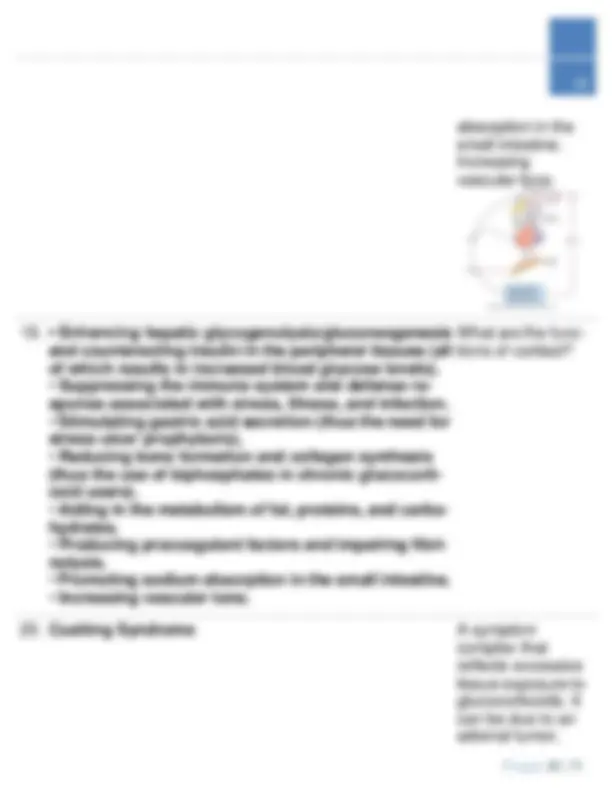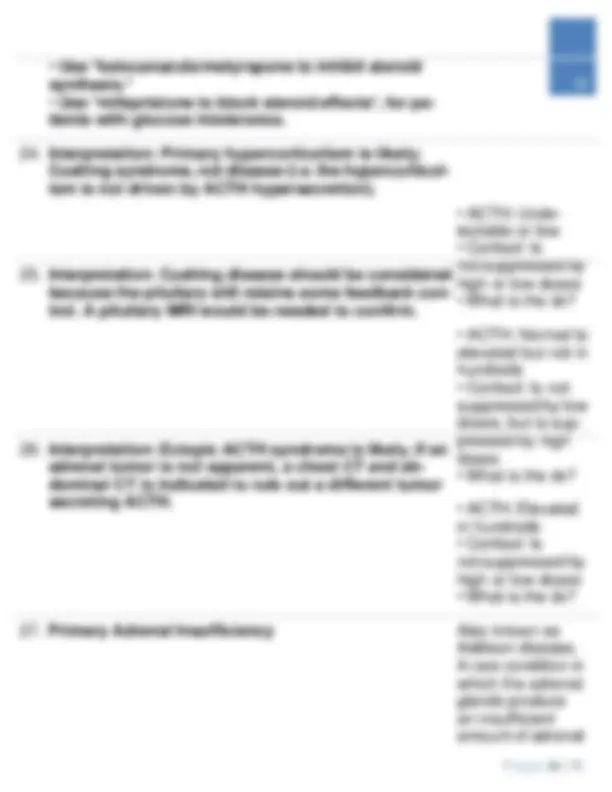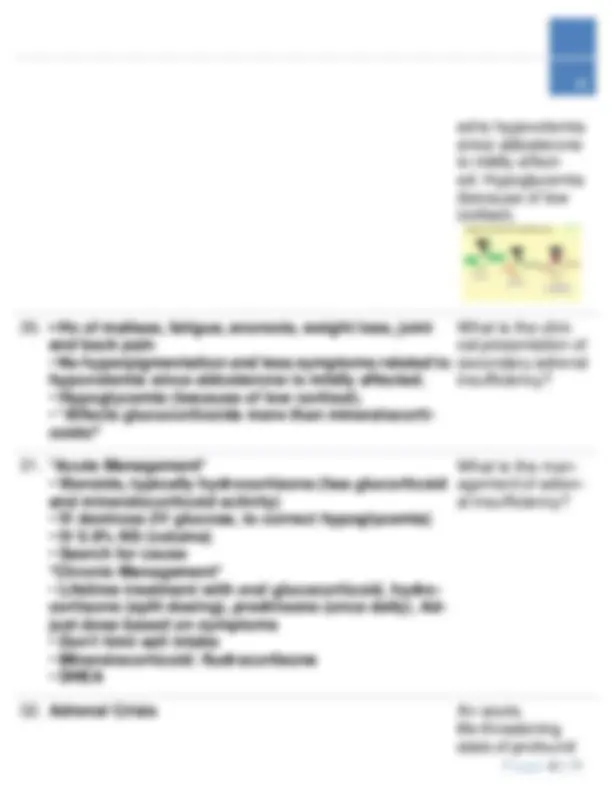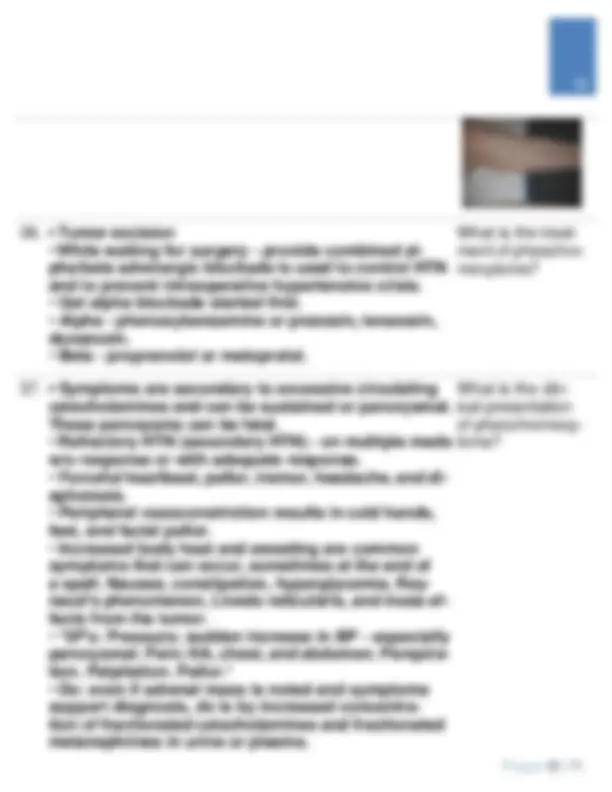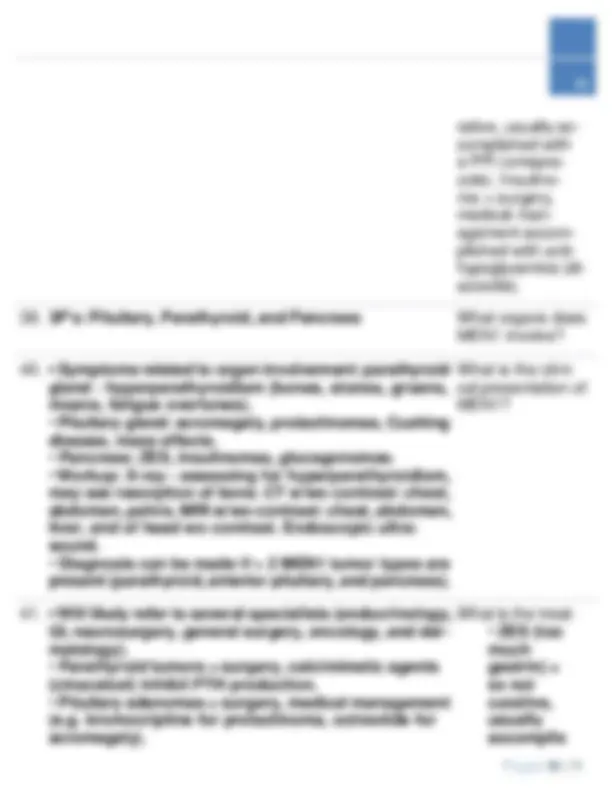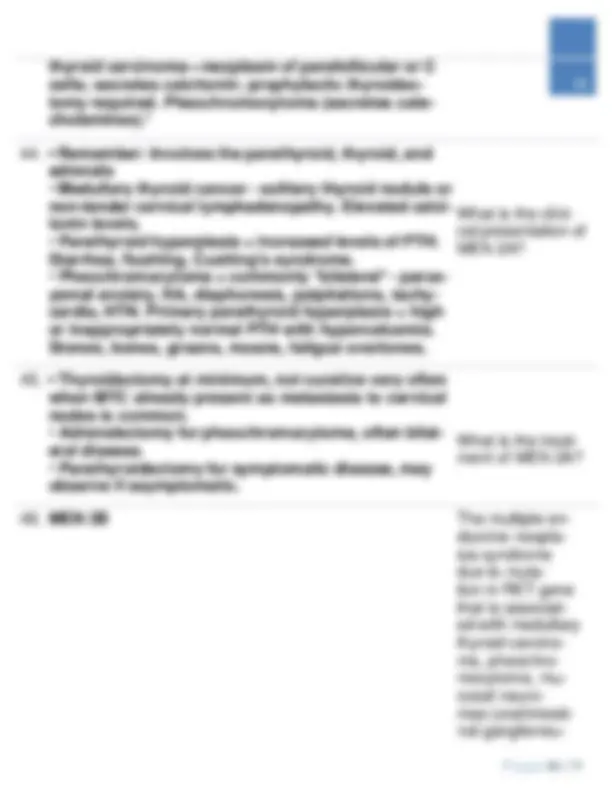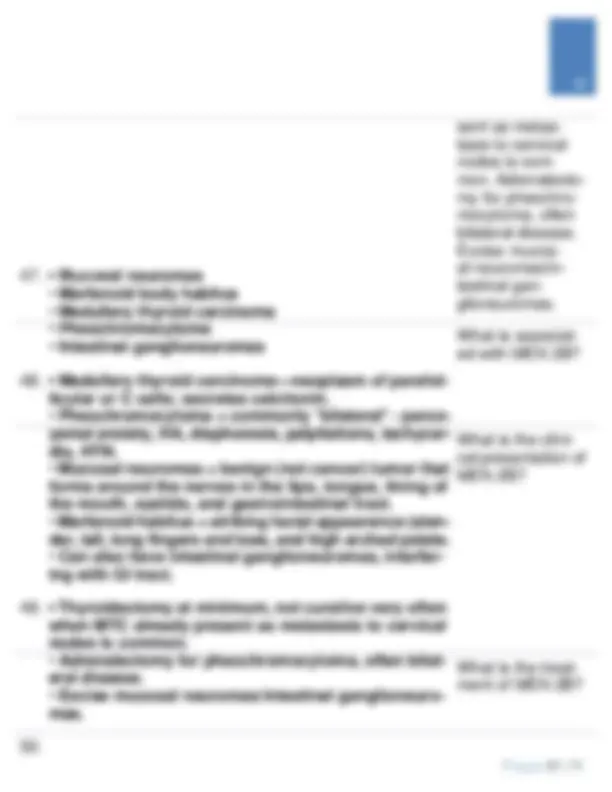Download Adrenal Glands & Endocrine Disorders: Functions, Presentations & Treatments and more Exams Nursing in PDF only on Docsity!
- Adrenal Glands A pair of endocrine glands that sit just above the kidneys and secrete hormones that help arouse the body in times of stress. Composed of two main regions -- cortex and medulla. The adrenal cortex produces steroid hormones (GFR-ACE mnemonic). Zona glomerulosa = produces mineralocorti- coids, primarily aldosterone. Zona fasciculata = produces glucocorticoids, primarily cortisol. Zona reticularis = produces adrenal androgens (primarily estrogen/dehy- droepiandros- terone [DHEA]). Adrenal medulla produces catecholamines -
epinephrine, norepinephrine, and dopamine.
- Zona Glomerulosa The portion of the adrenal cor- tex that pro- duces mineralo- corticoids, primari- ly aldosterone.
- Zona Fasciculata The portion of the adrenal cortex that produces glu- cocorticoids, pri- marily cortisol.
- Zona Reticularis The portion of the adrenal cortex that produces adrenal androgens (primarily estrogen/dehy- droepiandros- terone [DHEA]).
- Adrenal Medulla The inner layer of the adrenal glands that produces cat- echolamines - ep- inephrine, nor- epinephrine, and dopamine.
- Aldosterone Hormone that plays an important role of sodium, chloride, potassi- um, and indirect- ly, water home- ostasis. It is thus called a mineralo- corticoid hormone. It is synthesized by the zona glomeru- losa. It stimulates renal tubular Na+ reabsorption and
cretion is primar- ily stimulated by hyperkalemia and angiotensin II.
- Renin-Angiotensin-Aldosterone System (RAAS) A hormone cascade pathway that helps regulate blood pressure and blood volume. First, the juxtaglomerular cells of the kidneys will sense a decrease in blood pressure going through the nephron tubule, causing the release of renin. Renin will interact with angiotensinogen, which is produced by the liver, to produce angiotensin I. Angiotensin I will interact will
angiotensin-con- verting enzyme (ACE) to convert
liver and convert- ed by renin to an- giotensin I.
- Angiotensin I An inactive precur- sor that is convert- ed by ACE to yield active angiotensin II.
- Angiotensin Converting Enzyme (ACE) An enzyme in the lungs that con- verts angiotensin I to angiotensin II.
- Angiotensin II A peptide hor- mone that stim- ulates constriction of precapillary ar- terioles and in- creases reabsorp- tion of NaCl and water by the prox- imal tubules of the kidney, increas- ing blood pressure and volume. It will also stimulate the posterior pituitary
- Hyperaldosteronism Excessive secretion of aldosterone by the adrenal glands. Rare cause of secondary hypertension. Primary = due to adrenal hyperplasia, adrenal adenoma, or adrenal carcinoma. Elevated aldosterone, low renin due to negative feedback. Secondary = due to renovascular hypertension (renal artery stenosis), diuretic use, and severe heart failure. Elevated aldosterone and elevated renin. Body is
attempting to increase perfusion to the
determine primary or secondary cause.
Treatment: adrenalectomy, spironolactone (mineralocorticoid antagonist diuretic), hypertension management.
- • Refractory hypertension, HA, muscular weakness, fatigue, muscle cramps - if present hypertension.
- On BMP, observe hypokalemia, hypernatremia, meta- bolic alkalosis (less common).
- Look at renin activity to determine primary or sec- ondary cause. What is the clin- ical presentation of hyperaldostero- nism?
- Primary Hyperaldosteronism Autonomous over- production of al- dosterone which results in suppres- sion of renin-an- giotensin system. It is also known as Conn's syndrome. It is secondary to adrenal hyperpla- sia, adrenal ade- noma, or adren- al carcinoma. Ob- serve elevated al- dosterone, which inhibits renin lev- els.
complex functions include: enhancing hepatic
glycogenolysis/glu- coneogenesis and counteracting insulin in the peripheral tissues (all of which results in increased blood glucose levels). Suppressing the immune system and defense response associated with stress, illness, and infection. Stimulating gastric acid secretion (thus the need for stress ulcer prophylaxis), reducing bone formation and collagen synthesis (thus the use of biphosphates in chronic glucocorticoid users). Aiding in the metabolism of fat, proteins, and carbohydrates. Producing procoagulant factors and














